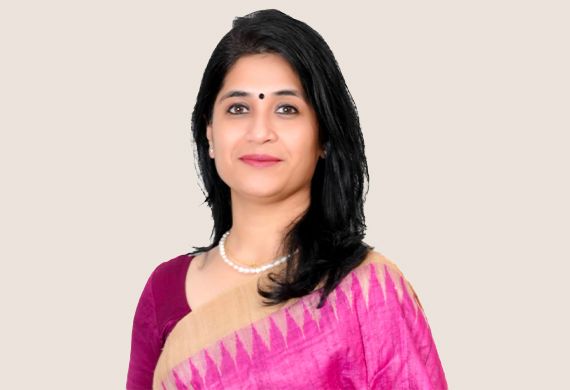
A Paradigm Shift: Understanding the Evolution of ESG, CSR in the Indian Finance Sector
By: Apurva Rathod - Company Secretary, and Chief Sustainability Officer, L&T Finance
Apurva Rathod, with over 22 years of experience in Legal, Compliance, Risk Management, and Corporate Secretarial functions, has led L&T Finance's CSR and Sustainability initiatives since 2020. She played a key role in corporate restructuring, governance enhancement, and scaling ESG & CSR efforts. She previously contributed to Fidelity International and Kotak Mahindra AMC in corporate M&A.
In an engaging interaction with Women Entrepreneurs Review Magazine, Apurva shares her insights on the evolving regulatory landscape, ESG integration in corporate operations, navigating corporate restructuring amid market shifts, and driving CSR initiatives to uplift rural women’s socio-economic conditions in the article below.
How do you see the integration of sustainability and governance driving the future of corporate operations, and how do you manage to stay ahead of these trends?
Sustainability and governance are the two essential pillars of a company and have been so for many years now. Today, sustainability of the business operations on the foundation of governance framework has become more important with regulators focusing on both – sustainability aspects and governance. I believe integrating sustainability and governance into corporate operations is now a must due to the increasing focus on these aspects by various stakeholders including investors and end consumers and not only regulators.
At L&T Finance, we began our sustainability journey in FY2019. We started by first disclosing as per various standards followed by adoption and implementation of various requirements specified by the standards and today, our goal is to make our company an ESG conscious company. In fact, ESG is one of the pillars of our 5 – year business strategy.
L&T Finance has always endeavored to take lead on various sustainability aspects, some of which include –voluntary adoption of disclosures of BRSR a year ahead of its applicability, undertaking assurance of its report by the external independent party, voluntary disclosures of ESG parameters for its value chain partners, disclosure of BRSR core parameters ahead of the mandated timeline, formation of a Board level ESG committee, etc. These proactive and voluntary initiatives have helped us to stay ahead of the trends.
What approach do you take to steering strategic initiatives, especially in the context of changing market conditions and shifting business priorities?
Corporate restructuring is fundamentally driven by the strategic vision that a company adopts, with a clear focus on the desired end goal or objective. At L&T Finance, we embarked on our journey of corporate restructuring with an aim of becoming one L&T Finance, i.e., having one consolidated lending entity as against having various companies within L&T Finance with different licenses.
Any restructuring activity starts with creating a blueprint of the steps involved alongside the timelines – as is said ‘a good plan is half of the work done’. A good and comprehensive blueprint created post deliberations and engagement with various stakeholders – internal as well as external, helps in swift execution due to the clarity it provides. Two things which are imperative for any restructuring plan to be a success; 1st - plan needs to be agile to meet the changing market conditions; 2nd – one needs to have in place a plan B, in case the initial plan doesn’t work out.Anticipating roadblocks or complexities that might arise during execution, way ahead of time and being prepared for the same helps a company to deal with sudden and unexpected roadblocks more effectively rather than dealing with issues as they come up. Apart from these, a few other aspects like follow-up, review process, constant engagement, and communication are also critical.
L&T Finance's success in completing its restructuring in record time, despite the complexities involved (varied regulatory licenses, dealing with NCLTs in different jurisdictions, change in rules announced while the merger was in process, etc.), is a testament to the effectiveness of the approach.
In a rapidly changing financial ecosystem, how do you ensure that corporate governance frameworks remain robust yet flexible enough to adapt to new business models and technological innovations?
Governance plays a crucial role in all aspects of life, but its significance is amplified in the corporate world where investor funds are at stake. For me, corporate governance goes beyond mere compliance with the law; it involves upholding the spirit of the law. I believe in asking myself whether I would have acted in the same manner in my personal capacity. This personal integrity check ensures that decisions are aligned with ethical standards.
The corporate governance framework encompasses the rules, processes, and practices established based on regulations and company values. In today's rapidly evolving business landscape, where business models and regulations are constantly changing, corporate governance framework needs to be both futuristic as well as aligned to the current standards. To achieve the dual purpose, a few key elements are: periodic review of the framework, obtaining feedback from all stakeholders by it, benchmarking against peers – both domestic as well as international, and building accountability at all levels. By incorporating these practices, companies can ensure their governance framework remains relevant and effective in the face of ongoing change.
Further, in the current era of FinTechs, it is essential to leverage technology as a tool to enhance the functionality of the corporate governance framework. Technology can play a pivotal role in both the monitoring and implementation of governance practices.
Furthermore, as we adapt newer technologies, the framework should be capable of incorporating applicable tech-related laws. Technological innovations offer a powerful means to implement an agile and flexible corporate governance framework equipped with real-time monitoring capabilities.
As Chief Sustainability Officer, how are you ensuring in improving the socio-economic conditions of rural women through CSR initiatives?
While diversity and inclusion are in the DNA of the organization, its impact extends far beyond our walls. Our CSR flagship project, the Digital Sakhi, exemplifies our commitment to making a tangible difference in the lives of women in rural India. Centered around enhancing financial and digital literacy, this initiative aims to make rural women self-reliant by equipping them with the skills and knowledge they need to navigate in their local surroundings.
Since its inception in 2017-18, the Digital Sakhi project has sensitized over 55 lakh community members in 9 states, 25 districts and over 2,500 villages covering predominantly rural women, empowering them to take control of their financial futures. Through entrepreneurship training programs, around 17,000 women have gained the skills and confidence to become self-reliant entrepreneurs, driving economic growth and empowerment in their communities.
It is worth noting that every single rupee invested in this initiative has resulted in generating Rs.123 as social return on investment, highlighting the profound impact of our efforts
(Source: CRISIL SROI study 2024).






